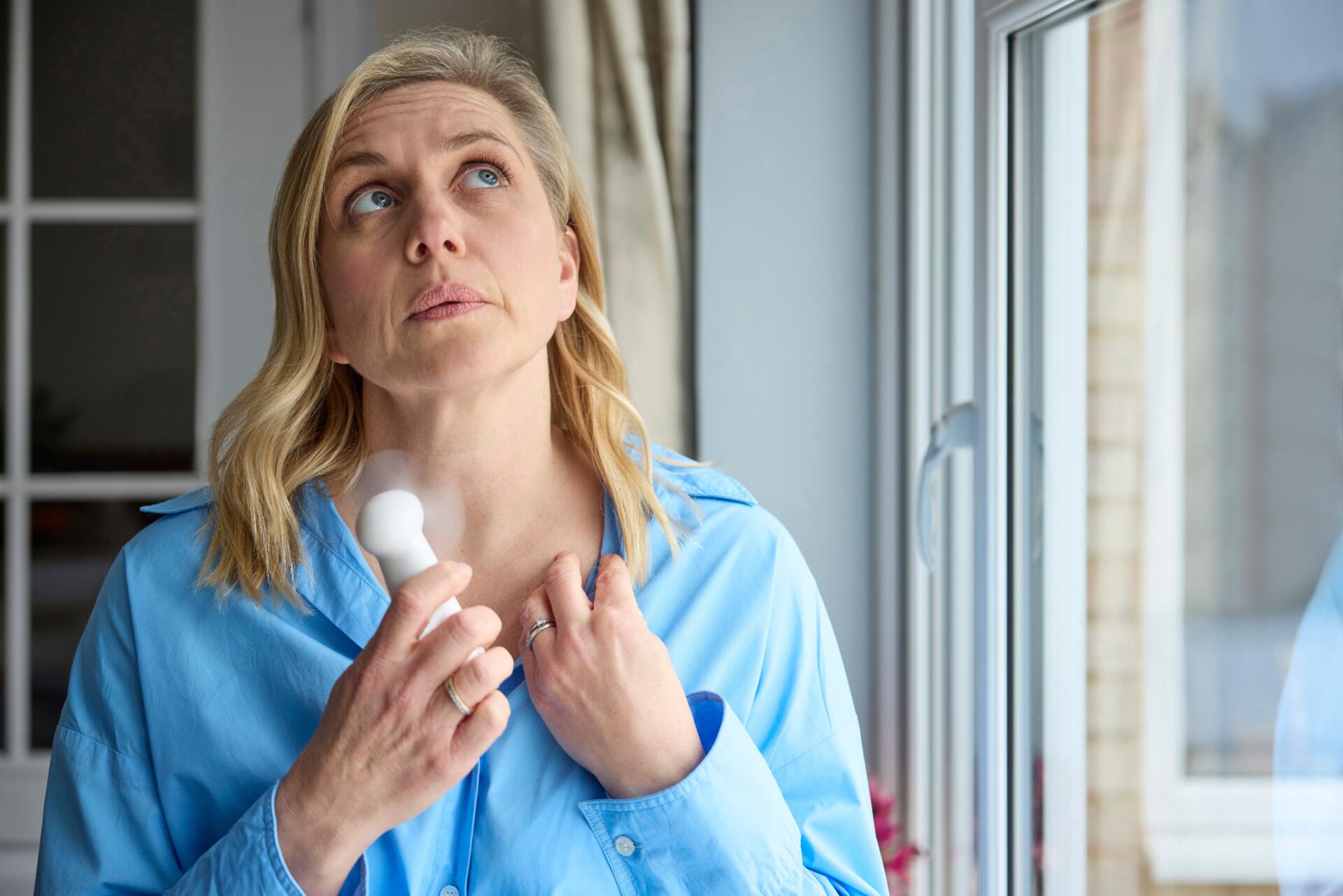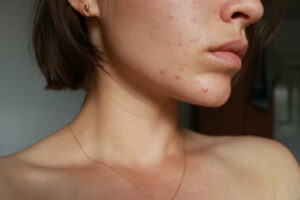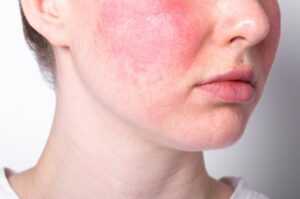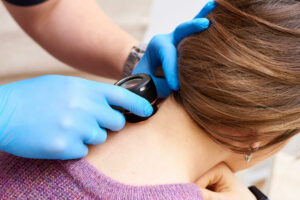As if back-to-school shopping wasn’t enough to tackle for our kids – what’s popular, what fits, what’s on sale? – you may be dealing with a teenager who’s suddenly convinced they can’t go back to school. “Look at my face!”
Acne doesn’t care about our social calendars. It can add angst when it appears right before you have to show up in front of hundreds or thousands of other teenagers.
How can you help your teen achieve pores that stand up to peer review?
What Causes Acne?
The American Academy of Dermatology estimates acne to be the most common skin condition in the U.S., affecting upwards of 50 million people of all ages. (But yes, we know, telling your teenager they’re not alone doesn’t help!)
Acne comes from a combination of hormones, excess oil, dead skin cells, and bacteria called cutibacterium acnes. When hormones go through changes (as they do in puberty, and for women, pregnancy, and menopause), they produce skin oils called sebum that act like a glue trapping dead skin cells inside the pores. Clogged provide a perfect home for bacteria to thrive. In some cases the pressure can build up under the skin, leading the pores to burst. The associated inflammatory reaction is red, painful, and can include pus bumps.
Daily Habits for Healthier Skin
How can you help keep acne at a distance?
“Keep it simple,” says Lisa Chipps, MD of Moy Fincher Chipps Facial Plastics & Dermatology, a Golden State Dermatology (GSD) affiliate. “If you don’t normally follow a 5-step routine, don’t start one now. Also, remember that the more you put on your skin the more you can irritate it. Less can be more.”
Prevention Through Daily Maintenance:
- Clean: Wash your face with a gentle cleanser after you get up and before going to bed (avoid anything abrasive, either the cloth or the cleanser).
- Protect: Apply SPF every morning.
- Stimulate: To speed up cell renewal and reduce inflammation, apply an over-the-counter (OTC) retinol/adapalene every night (look for products that list these near the top of the ingredient list, indicating a higher potency).
- Moisturize: Use oil-free moisturizer as needed. (And remember that if you dry out the skin, it produces more oil. So avoiding moisturizer isn’t good, but for some skin types, the SPF may be enough.)
- Target: For spot treatments, check out our list of ingredients to look for.
Make sure all makeup, moisturizers, and sunscreen are non-comedogenic/oil free. The packaging will promote these benefits, so you don’t have to wade through the long list of ingredients.
Treatment, Not TikTok
If your teenager has severe acne, tell them not to look for advice on TikTok or automatically do what their friends do. Remember your skin can scar, so treating acne shouldn’t follow trends.
- Blue Light Photodynamic Therapy: This is a noninvasive procedure where doctors apply a topical to the skin (called Levulan), which increases the skin’s sensitivity to light. After about 30 minutes, the skin is exposed to blue light, which kills the damaged skin cells. This same therapy is useful for sun damage and pre-cancerous spots (actinic keratosis).
- Vitamin A: Applied topically, Vitamin A helps decrease clogging of pores to stop the cycle. Every treatment is individualized, and some can include other topical medications and antibiotics. In some cases, Vitamin A may be prescribed orally. (It’s important to know there can be side effects, which is why this is done only by prescription and under your doctor’s care.)
- Sebacia treatment: Consisting of three short 30–45-minute sessions over two weeks, this treatment delivers a formulation of gold particles to your skin which are then heated with a dermatology laser. This selective heating results in fewer acne lesions and improved skin. (You can see a video here.)
Acne Scarring: Causes and Treatments
Maybe you’re done with acne, but you still have the scars. They can show up in different colors (pink, red, purple, or brown) and different shapes. They’re a normal part of healing after an injury (including acne) but knowing they’re normal probably doesn’t make you feel better!
Acne scarring is more common if you’ve had severe inflammatory acne, or for those who just can’t keep their hands off their acne. That last part might sound like a myth, but it’s true. When you squeeze or pick at a bump, it forces bacteria deeper into the skin. That can damage the epidermis (the top layer of skin), which leads to post-acne hyperpigmentation and shallow scars.
When the damage penetrates more deeply to the dermis (that’s the deeper skin layer), the body will produce collagen during the healing process. If you get too much or too little, you’ll end up with different types of scars. In other words, the worse the inflammation, the worse the scar.
“Scars are meant to be temporary, while the body heals,” said Dr. Chipps, “but in some cases, the body can’t sufficiently heal, so the scars stay behind. Fortunately, now we have the technology to treat them.”
Acne scarring treatments
As always, the first step is to schedule a consultation. The skin is complex, and each person is unique — there is no one-size-fits-all fashion for skincare!
Depending on your situation, options can include:
- Laser resurfacing: the laser heats a section of tissue to eliminate pigment
- Microneedling radiofrequency: targets deeper layers
- Topical treatments: to help the skin regenerate more quickly
- Dermal fillers: these give skin a plump appearance and help cushion deeper layers of tissue
- Subscision and even surgery in some cases, where more targeted treatment is needed.
“Acne may feel like it shows up overnight, but treatments often take 6-10 weeks to start to show significant improvement,” said Dr. Chipps. “In many cases we combine different treatments for the best result. And the results are good! Acne doesn’t have to be forever.”






